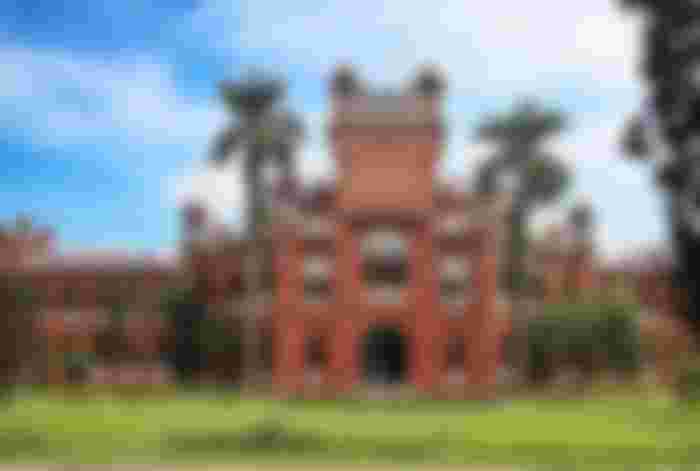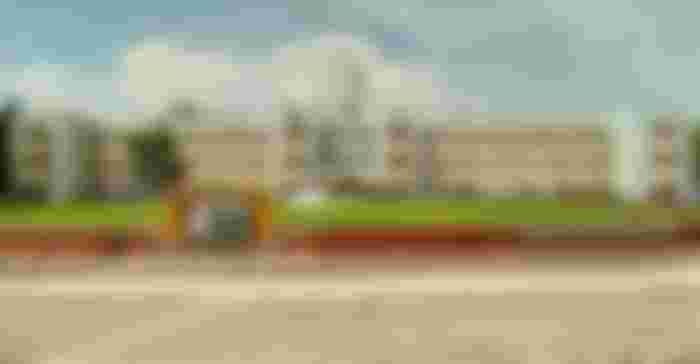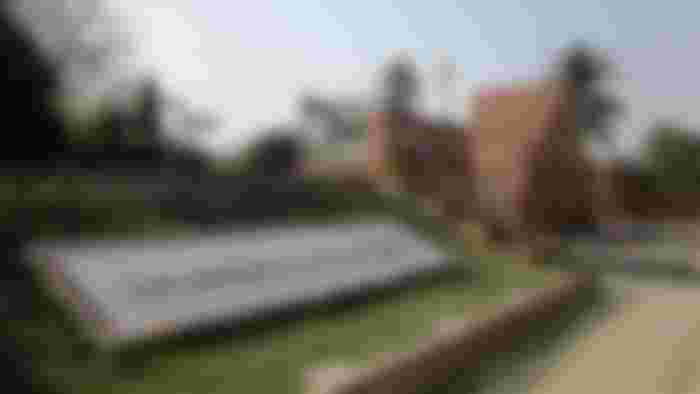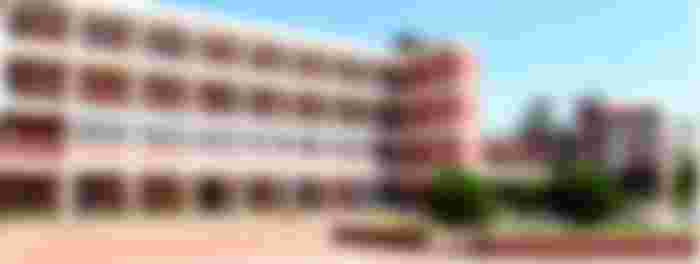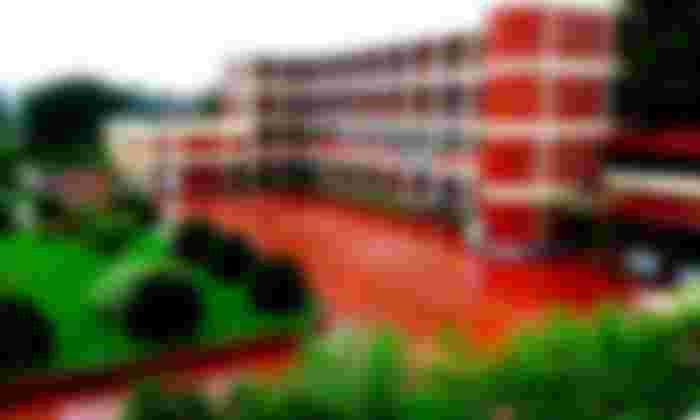There are about 50 public university in Bangladesh. Among them top 10 of 4 category, i,e: general, science and technology, agriculture and Engineering are discussed bellow.
General 1.University of Dhaka (DU)
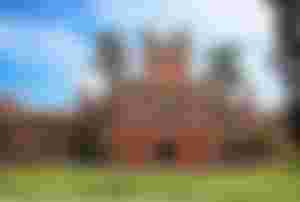
The University of Dhaka (also known as Dhaka University, or abbreviated as DU) is a public university located in Dhaka, Bangladesh. It is the oldest university in Bangladesh. On the first day of July 1921, the university opened its doors to students. Today, it is the largest public research university in Bangladesh, with a student body of 37,018 and a faculty of 1,992. It was identified by AsiaWeek as one of the top 100 universities in Asia.
Nawab Bahadur Sir Khwaja Salimullah, who played a pioneering role in establishing the university in Dhaka, donated 600 acres of land from his estate for this purpose.
It has made significant contributions to the modern history of Bangladesh. After the Partition of India, it became the focal point of progressive and democratic movements in Pakistan. Its students and teachers played a central role in the rise of Bengali nationalism and the independence of Bangladesh in 1971.
The university's distinguished alumni include Muhammad Yunus (winner 2006 Nobel Peace Prize, pioneer of Microcredit), Natyaguru Nurul Momen (Pioneer literetuer, Theatre & Cultural Doyen; who was both an early student & teacher of DU), Muhammad Shahidullah (educator, philologist & linguist), Serajul Islam Choudhury (the country's leading public intellectual and writer), Rehman Sobhan (social democratic economist), Mohammad Ataul Karim (physicist), Abul Fateh (one of the founding fathers of South Asian diplomacy), Buddhadeb Bose (20th-century Bengali poet), Lotay Tshering ( Prime minister of Bhutan ) and Sheikh Mujibur Rahman (the founding father of Bangladesh). It also enjoyed associations with Satyendra Nath Bose, Vijayaraghavan, and Kazi Nazrul Islam.
2.University of Rajshahi

The University of Rajshahi, also known as Rajshahi University or RU is a public co-educational research university in Bangladesh situated near the northern Bangladeshi city of Rajshahi in a 305-hectare (753-acre) campus at Motihar, 3 kilometres (2 mi) East of the Rajshahi city center. It is the second largest, in terms of academic activities and also the second oldest university in Bangladesh. The university's 60 departments are organized into ten faculties. It is considered one of the top research universities in Bangladesh. Researchers of this university have recently contributed a significant amount of effort and played a key role in bringing back medieval Bangladeshi Muslin fiber. It has a formidable alumnus base around Bangladesh and abroad. Because of its beautiful and well-planned verdurous campus, academic atmosphere and traditional inclination towards outdoor sports, it is popularly known as the Cambridge of the East.
3.University of Chittagong

The University of Chittagong (CU), the most beautiful university in Bangladesh. Since its establishment in 1966, the University of Chittagong has grown to become one of the flagship research-led universities which is known for the excellence of its teaching, research, and services to local, national and international communities.
CU is continuously growing in its quality teaching and in-depth research along with its tangible infra-structural developments with commendable architectural designs. As one of the largest and oldest universities in Bangladesh, it comprises ten faculties including the Faculty of Arts and Humanities, Faculty of Science, Faculty of Business Administration, Faculty of Social Sciences, Faculty of Law, Faculty of Biological Sciences, Faculty of Engineering, Faculty of Education, Faculty of Marine Sciences and Fisheries and Faculty of Medicine.
CU is different it its campus-design, curricular & extra-curricular activities, ecological settings and natural surroundings with its defining characteristics. At present, CU has more than 27,000 students, 54 departments/institutes, and about 900 well-qualified teaching staffs. CU is one of the leading universities in Bangladesh in terms of quality research conducted by the faculties and post-graduate students. It has increasing number of quality publications published by faculties and post-graduate students in the internationally acclaimed research journals. The students of CU regularly win the top positions at the national level in debate, sports, computer programming, engineering designs and competition for business ideas. It is also the proud home to fine student-athletes, where performers win medals at national and international multi-sport events. For those reasons and many more, students identify CU by choice in ever-increasing numbers for building their personal, professional and academic careers.
4.Jahangirnagar University

Jahangirnagar University accustomed as a fully residential public university established in 1970 has now 36 departments and Six Faculties along with Four institutes, with added than fifteen thousand students, and about Five hundred academics adherent to teaching and research. The sprawling arresting campus is anchored 30 kilometres from the basic Dhaka, able-bodied affiliated with a civic highway. The aboriginal assembly of Independent Bangladesh accepted the university its Charter in 1973 beneath which the university is getting operated.
The badge of the university bears the civic annual ‘white lily’ (Lilium condidu) with three petals belted by strips of a acceptable floral architecture with the name of the university in Bangla ensconcing in a semi-circle like a band of flowers.
Located at Savar abreast Dhaka, Jahangirnagar University is one of the arch Universities in Bangladesh. The University is a residential one. It was formally launched on 12 January 1971 by its aboriginal adjudicator Rear Admiral S.M. Ahsan, Governor of above East Pakistan. After Emergence of Bangladesh the Government allowable the Jahangirnagar University Act. 1973, which repealed the antecedent authorization and renamed the University as Jahangirnagar University.The University owes its present appearance to this act beneath which it is now functioning.
About: Jahangirnagar University (JU)
Name: Jahangirnagar University
Type: Public University
Establishment: 20th August, 1970
5.Shahjalal University of Science and Technology(SUST)

Shahjalal University of Science and Technology was established in 1986. The campus is located in Kumargaon, approximately six kilometers away from the heart of Sylhet City Centre. The university started its academic program with three departments: physics, chemistry, and economics. Renowned scientist and educator Dr. Sadruddin Ahmed Chowdhury was the first Vice-chancellor of the university. The first convocation of SUST was held on Apr 29th, 1998 and the second convocation held on Dec 6th, 2007 where the third convocation was held on Jan 8th, 2020. At present, SUST has 7,662 students, 487 academic staffs and 772 administrative staffs; i.e. the university has 6.09 students per staff.
SUST is the first university in Bangladesh providing whole campus free Wi-Fi access for students and staff. The university introduced an integrated honors course for the first time in Bangladesh and it introduced the semester system (American credit system) from the 1996-97 session. In 2019, Executive Committee of the National Economic Council (ECNEC) allocated BDT 9.88 billion (US$117 million) fund for 20 development projects of SUST.
The students of SUST invented and introduced the paperless 24/7 SMS Based Automated Registration of Admission Test procedure for the first time in Bangladesh. Interested students can complete the registration process through mobile phone messages. The contemporary government launched the system on 13 September 2009. For the invention, the University won an Ambillion Award in a competition of South Asian countries in 2010 and National Award for E-Content and ICT for Development Award 2010. Now, most of the public universities in Bangladesh have adopted this process of registration.
6.Hajee Mohammad Danesh Science and Technology University (HSTU)

HSTU is relatively new as a university having been established in 1999. However, as an academic institution its history dates back to 1979 when it started its journey as an Agricultural Extension Training Institute (AETI) created to offer three year diploma course in Agriculture. In a matter of a decade it was elevated to degree-giving institution in 1988 and named as Hajee Mohammad Danesh Agricultural College. Ultimately based on the performance of Agricultural College but more importantly to cater to the crying need for highly skilled manpower in Science and Technology and for promotion of research in these vital areas Prime Minister of that time Sheikh Hasina declared to upgrade Hajee Mohammad Danesh Agriculture College to Science and Technology University on February 1999 in a public meeting held at Gor-E-Shahid Maidan of Dinajpur. On 6th September the property liabilities was handed over of former Agriculture College from Ministry of Agriculture to Ministry of Education. On the history of establishment of this University the 11th September is a glorious day. On this day of 1999 the Prime Minister of Peoples Republic Bangladesh Sheikh Hasina inaugurate the activities of this University by setting the foundation stone. After setting up the foundation stone, Prof. Asnisur Rahman was appointed as Project Director to establish the university. First batch of the students were admitted at that time (1999-2000 session). The Act of the University was passed on 8 July 2001 in the Jatio Shongsad (National Assembly) was followed by a gazette notification on 8 April 2002. At its inception it had inherited only the faculty of Agriculture but soon nine faculties were added to it. At present the faculties are:
(1) Agriculture
(2) Computer Science & Engineering
(3) Business Studies
(4) Engineering
(5) Fisheries
(6) Veterinary & Animal Science
(7) Science
(8) Social Science & Humanities and
(9) Post Graduate Studies.
There are total of 45 departments under these faculties. In addition to these Bachelor of Science offering faculties there is the Faculty of Postgraduate Studies offering MS and PhD degrees. Besides, there is also an Institute of Research and Training that conducts and coordinates research programmes and offers training to graduates and farmers. Thankfully, unlike most public universities of Bangladesh, HSTU does not suffer from session jam and is running smoothly.
7.Bangladesh Agriculture University (BAU)

In 1959 the Commission of National Education and the Food and Agriculture Commission agreed that a university specialising in agriculture was needed in Bangladesh. As a result, Bangladesh Agricultural University (BAU) was founded in 1961.
The university is located in the city of Mymensingh, one of Bangladesh’s divisions. Just three hours north of Dhaka, Mymensingh is considered a major financial centre and educational district. It is home to a number of universities, colleges and schools and is often referred to as "the city of education". Mymensingh is also rich in culture and religious diversity, with several mosques, temples and churches located around the city.
The university is comprised of six faculties: agriculture, agricultural economics and rural sociology, agricultural engineering and technology, animal husbandry, fisheries, and veterinary science. Within these faculties are 43 departments offering both undergraduate and graduate courses.
The university has gained recognition across Asia for its research in the field of agriculture. It collaborates with members of the local community, particularly children from primary and secondary schools, as well as orphanages, to carry out agricultural research projects. The presence of two national research institutes (Bangladesh Institute of Nuclear Agriculture and Bangladesh Fisheries Research Institute) on the campus grounds contributes to the university’s research developments.
Using this research, the university is committed to the agricultural development of the country. It encourages its students to become leading agriculturalists, agricultural scientists and researchers so that they too can contribute to the rapidly changing needs of the 21st century. With its 10 farms, the university works with local farmers and larger organisations to understand how it can help to improve the farming industry.
8.Bangabandhu Sheikh Mujibur Rahman Agriculture University (BSMRAU)

Location : Salna, GazipurTotal Area : 187 acres
Establishment : 22 November, 1998
Faculty : 5
Departments : 36
Faculty & Departments
Faculty of Graduate Studies
MS & PhD Program
Agricultural Engineering, Agro-Processing, Anatomy & Histology, Animal Breeding & Genetics, Animal Science & Nutrition, Aquaculture, Bio- Technology, Dairy & Poultry Science, Environmental Science, Fisheries Biology & Aquatic Environment, Fisheries Management, Fisheries Technology, Genetics & Fish Breeding, Gynecology Obstratics & Reproductive Health and Patho-Biology.
Faculty of Agriculture
Agricultural Extension & Rural Development, Agroforestry & Environment, Agronomy, Agricultural Engineering, Agro-processing, Bio-Chemistry & Molecular Biology, Bio-Technology, Computer Science & Information Technology, Crop Botany, Environmental Science, Entomology, Genetics & Plant Breeding, Horticulture, Plant Pathology, Soil Science, Seed Science & Technology Unit.
Faculty of Fisheries
Aquaculture, Fisheries Biology & Aquatic Environment, Fisheries Management, Fisheries Technology, Genetics & Fish Breeding.
Faculty of Veterinary Medicine & Animal Science
Animal Breeding & Genetics, Animal Science & Nutrition, Dairy & Poultry Science, Gynecology, Obstratics & Reproductive Health, Medicine, Micro-biology & Public Health, Patho-Biology, Physiology & Pharmacology, Surgery & Radiology.
Faculty of Agricultural Economics & Rural Development
Agricultural Economics, Agricultural Finance & Cooperatives, Agribusiness, Rural Development, Statistics.
Degree awarded : BS, DVM, MS and PhD
Student Hall : 4
Teachers : 214
Officers : 109
Employees : 256
Bangladesh University of Engendering and Technology

Bangladesh University of Engineering and Technology (BUET) is a pioneer in engineering education in Bangladesh. The history of BUET dates back to 1876 when the Dhaka Survey School was founded. Later in 1947, it became an engineering college and gained independent university status in 1962. It is located on a compact 83.9-acre land in the heart of Dhaka, the capital of Bangladesh.
BUET offers high-quality research and education through its 18 departments under five faculties which are architecture and planning, civil engineering, engineering, electrical and electronic engineering, and mechanical engineering. Six university-led institutes also focus on diverse areas of research. BUET has over 600 faculty members and over 10000 undergraduate and graduate students. Graduates from BUET have a long history of enjoying extraordinary success all over the world, with many notable alumni serving as the global leaders in their respective fields.
Excellent academic environment, state-of-the-art research facilities, and a vibrant campus life have made BUET the first choice for future engineers and architects in Bangladesh. Students are enrolled at BUET through a highly-competitive entrance examination. BUET is the technological research and innovation hub in Bangladesh. It has been contributing immensely to nation-building since its establishment by providing expert services to hallmark infrastructure development projects. Faculty members work closely with industry and the Government to address crucial problems and formulate national policies and strategies in various sectors. BUET is an active member of the Association of Commonwealth Universities and maintains strong collaborations with hundreds of renowned universities and industries at home and abroad.
Rajshahi University of Engineering and Technology

History:
The institute was founded in 1964 as Rajshahi Engineering College with three faculties and limited number of students. The name of the institute was turn to Bangladesh Institute of Technology (BIT), Rajshahi in 1986 to enhance the technical education and finally it is upgraded as Rajshahi University of Engineering & Technology (RUET) in 2003 to enhance the technical education and research. The university is dedicated for excellence in technical education and research in line with its vision. The university is progressing steadily to be a comprehensive university providing various assortments of under-graduate and post-graduate program. The institute first intake students was 122 in 1964 and extended to 3000 plus now including under-graduate and post-graduate program. Students are pursuing their higher study and research in the field of engineering and technology with well equipped modern and updated laboratory facilities. The university community has close interaction and free exchange of knowledge, ideas among the faculty members, students, staffs, nationalities and background inside the beautiful green campus. RUET is dedicated to ensure build quality graduates in line with the national and global needs for the development. We are proud in providing quality graduates through equipping them with updated and broad range of technical knowledge, competency, soft-skills and industry relevant skills. We are also proud that, many graduates of this institute are holding their positions in a research activities and faculty members of world top ranked universities. The aim of RUET is to take care the graduates who will be sufficiently able to contribute to the society, industry, national and international competent professionals with reliability and honestly. RUET is important to meet the challenge of globalization, emerging innovation and knowledge based economy. The graduates of RUET are encouraged to give constant effort on learning to sustain their adaptability and employability. RUET has also future plan to extend its academic and research capabilities through new department and several research institutes.
Location:
Rajshahi University of Engineering & Technology (RUET) is situated in the northern part of Bangladesh name Rajshahi is one of the largest divisional headquarter of the country. The campus is located about 250 km north-west of Dhaka city and in urban area of Rajshahi adjoining with Dhaka-Rajshahi highway nearby of Rajshahi University. Dhaka to Rajshahi can be reached in about 5 hours by car, 6 hours by public bus, 6.5 hours by inter-city train and half an hours by airlines. The university is about 10 minutes drive (4 km) from the railway station and bus terminal and 20 minutes drive (8 km) from the Shah Makhdum Airport Rajshahi. Auto rickshaw, CNG and public bus is available 24 hours to reach the university from all the terminals.
Weather :
The distinguishable seasons in Bangladesh are summer and winter. In summer season (May-October) temperature of RUET is hot and typically 25-40 0C and sometimes humid. In winter season (November-April) temperature is moderate typically 8-20 0C.
Accommodation:
Students, teachers and staffs are accommodates inside the campus of green environment. Accommodations of visitors are arranged in the university guest house inside the campus upon permission of Vice-Chancellor.
Food:
All the student dormitories, guest house and teachers/staffs quarters have cooking facilities inside the campus. The food corners are available in RUET cafeteria and canteen inside the campus. Apart from these, food corners are in the adjacent of RUET boundaries namely, Kazla, Talaimari traffic, Talaimari Bazar etc.
Market:
Groceries are available inside the campus in the canteen area for daily necessities. One can walk 5 minutes from RUET gate for medicine, tailoring, photocopying, offset printing etc. One can go New Market, Shaheb Bazar 5 km away from RUET to buy wide variety of necessities.
Hospital:
RUET has medical centre inside the campus to provide indoor medical facilities for common health problems. Complicated health problems immediately referred to Rajshahi Medical College providing ambulance service of RUET 6 km away from the campus.
